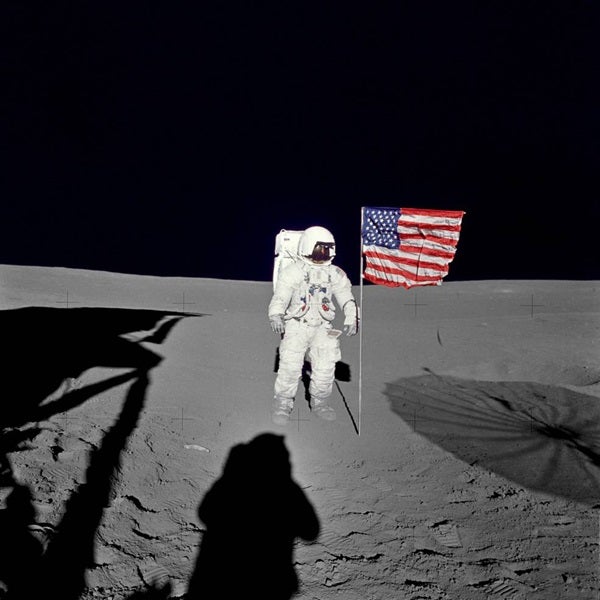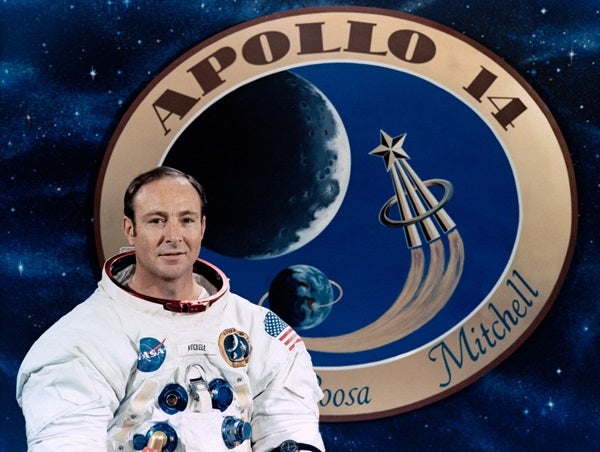Mitchell joined Apollo 14 commander Alan Shephard, Jr., the first American in space, in the lunar module Antares, which touched down February 5, 1971, in the Fra Mauro highlands. Shepard and Mitchell were assigned to traverse the lunar surface to deploy scientific instruments and perform a communications test on the surface, as well as photograph the lunar surface and any deep space phenomena. It was Mitchell’s only spaceflight.
Mitchell and Shephard set mission records for the time of the longest distance traversed on the lunar surface; the largest payload returned from lunar surface; and the longest lunar stay time of 33 hours. They were also the first to transmit color TV from the lunar surface. Mitchell helped collect 94 pounds of lunar rock and soil samples that were distributed across 187 scientific teams in the United States and 14 other countries for analysis.
Mitchell was drawn to the spaceflight by President Kennedy’s call to send astronauts to the moon. “After Kennedy announced the moon program, that’s what I wanted, because it was the bear going over the mountain to see what he could see, and what could you learn, and I’ve been devoted to that, to exploration, education, and discovery since my earliest years, and that’s what kept me going,” Mitchell said in a 1997 interview for NASA’s oral history program.
“To me, that (spaceflight) was the culmination of my being, and what can I learn from this? What is it we are learning? That’s important, because I think what we’re trying to do is discover ourselves and our place in the cosmos, and we don’t know. We’re still looking for that.”
Mitchell retired from NASA and the U.S. Navy and founded the Institute of Noetic Sciences in 1973, organized to sponsor research in the nature of consciousness. In 1984, he co-founded the Association of Space Explorers, an international organization for all who “share experience of space travel.” The mission of this organization is to provide a new understanding of the human condition resulting from the epoch of space exploration.
Edgar D. Mitchell was born September 17, 1930, in Hereford, Texas, and considered Artesia, New Mexico, his hometown. He graduated with a B.S. in Industrial Management from Carnegie Mellon in 1952, a B.S. in Aeronautics from the U.S. Naval Postgraduate School in 1961, and a doctorate in Aeronautics and Astronautics from the Massachusetts Institute of Technology in 1964. NASA selected Mitchell as an astronaut in 1966. He served on the support crew for Apollo 9 and as backup lunar module pilot for Apollo 10. He worked in the lunar module simulator at the Johnson Space Center during Apollo 13, developing procedures that would bring the crew of that crippled spacecraft home.











